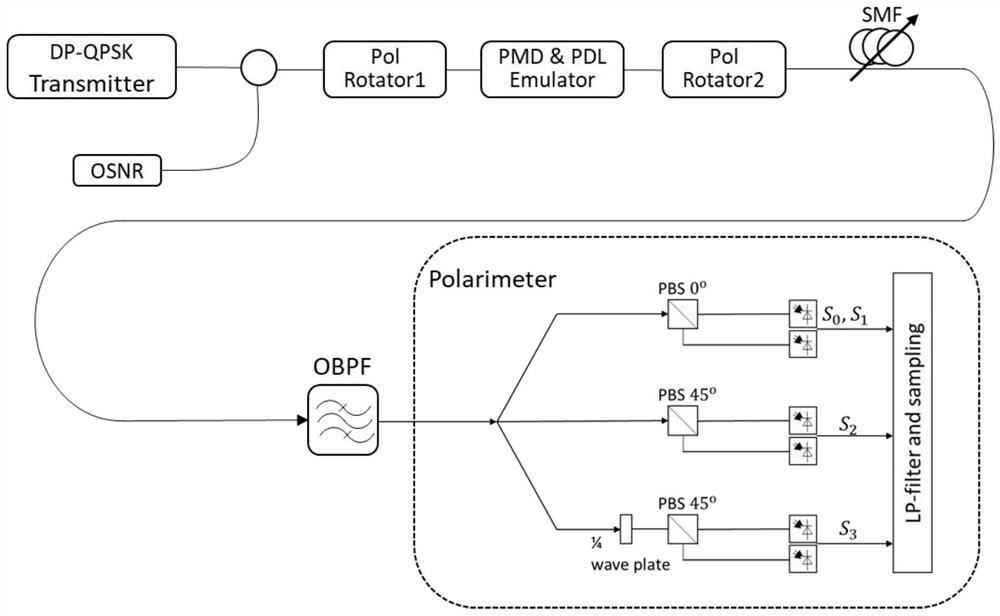An optical signal-to-noise ratio monitoring device and monitoring method
A technology of optical signal-to-noise ratio and monitoring device, which is applied in the direction of instruments, calculations, electrical components, etc., can solve problems such as cost impact, and achieve the effect of low cost, simple structure, and high accuracy
- Summary
- Abstract
- Description
- Claims
- Application Information
AI Technical Summary
Problems solved by technology
Method used
Image
Examples
Embodiment 1
[0027] like figure 1 The shown optical signal-to-noise ratio monitoring device includes a signal acquisition device, a signal feature extraction device, and a support vector regression model connected sequentially. The signal feature extraction device is used to extract the signal-to-noise ratio and polarization impairment in the Stokes parameters, and the support vector regression model is a model obtained by training multiple groups of optical signal signal features and corresponding optical signal-to-noise ratio values. The device can be installed at each node in the network. During operation, the signal acquisition device is used to obtain the optical signal transmitted by the optical fiber link 2, that is, the Stokes parameter in the signal to be tested, and the signal feature extraction device extracts the Stokes parameter in the Stokes parameter. Signal-to-noise ratio and polarization-damaged signal features, the above-mentioned extracted signal is input into a support ...
Embodiment 2
[0029] Based on the principles of the foregoing embodiments, this embodiment refines its implementation manners.
[0030] The signal acquisition device includes a signal separation device, a signal detection device, a low-pass filter, and an analog-to-digital converter connected sequentially. The signal separation device can use a 99:1 directional coupler 1, the polarization multiplexed optical signal containing spontaneous emission ASE noise transmitted in the wavelength division multiplexing WDM optical communication network, after being separated by the directional coupler, through the adjustment of the optical bandpass filter The bandwidth of the filter is to allow only one optical signal channel to pass without affecting its adjacent channels; the signal detection device can be implemented with a polarimeter to obtain continuous Stokes parameters in the polarization multiplexed optical signal; the low-pass filter can be used A digital low-pass filter is used for continuou...
PUM
 Login to View More
Login to View More Abstract
Description
Claims
Application Information
 Login to View More
Login to View More - R&D
- Intellectual Property
- Life Sciences
- Materials
- Tech Scout
- Unparalleled Data Quality
- Higher Quality Content
- 60% Fewer Hallucinations
Browse by: Latest US Patents, China's latest patents, Technical Efficacy Thesaurus, Application Domain, Technology Topic, Popular Technical Reports.
© 2025 PatSnap. All rights reserved.Legal|Privacy policy|Modern Slavery Act Transparency Statement|Sitemap|About US| Contact US: help@patsnap.com



